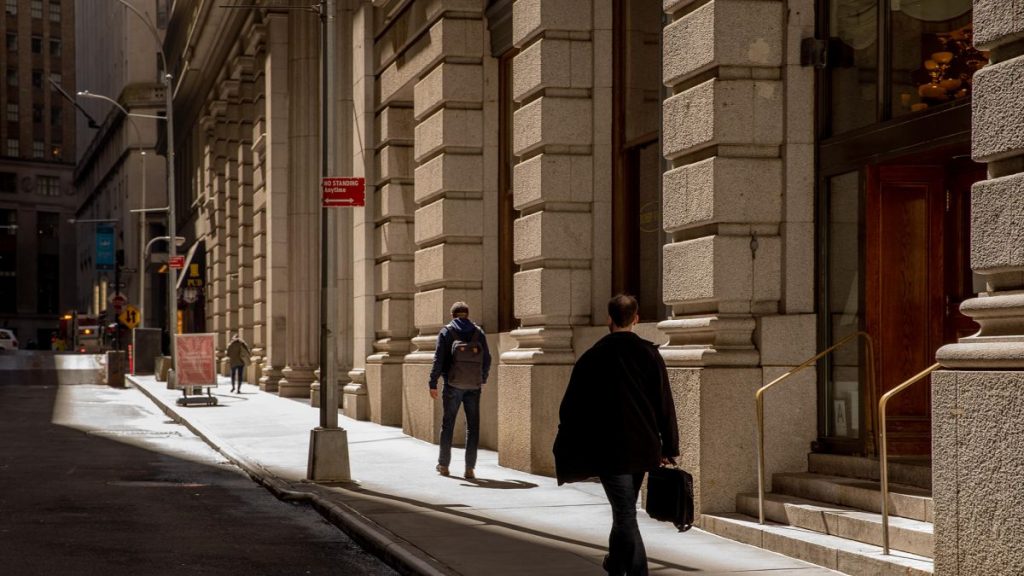Landlords of commercial properties have a lot on their plates in the modern era of telecommuting because empty cubicles and abandoned office buildings are here to stay.
Only a small group of researchers who had studied remote work for years predicted that it would survive the initial phase of the pandemic and become the norm. Over a quarter of American workers have been doing so for over two years, and that number is only expected to grow in the coming years.


The result: In a report published on Wednesday, global real estate firm Cushman & Wakefield predicted that by 2030, as much as 330 million square feet of U.S. office space would become vacant and unused as a result of remote and hybrid work. About 1 billion square feet of office space will become vacant over the next seven years, including another 740 million square feet of space that will become vacant from “natural” causes.
National office vacancy rates were around 12% in 2019 before the pandemic ignited the commercial real estate market. Cushman & Wakefield, on the other hand, says that vacancy rates will rise by 55%, reaching around 18% by 2030.
A major bust in the commercial real estate market would have far-reaching effects, leaving office tower landlords and managers scrambling to make up for lost income and cities short on tax revenue.
According to Kevin Thorpe, Cushman & Wakefield’s chief economist and head of global research, “the relationship between job growth and office demand has fractured.”
Vacant workplaces
Hybrid work seems to be gaining ground in the ongoing struggle between employers and employees over where to work. That’s great news for employees who want to keep some of the pandemic-era schedule flexibility they enjoyed, but bad news for businesses that spent a lot on fancy new offices in the past few years.
Some businesses increased their spending on new offices in late 2020 and early 2021 on the assumption that their newly expanded workforces would soon be returning to the physical location. This was especially true in the technology industry. Companies like Google, Amazon, and Facebook’s parent company, Meta, have been buying up empty office buildings across the country, starting in Manhattan. This trend is likely to continue, as many experts predict that traditional workplaces will remain an important part of the modern workplace. Some tech companies were early adopters of remote work, but others, including Apple and Microsoft, were among the first to require workers to physically return to the office.
Employees’ insistence on working remotely at least part-time, combined with increasingly gloomy economic conditions for tech companies, prompted a reevaluation of the sector last year, prompting many businesses to unload much of their newly acquired floor space. In recent months, many companies, including Salesforce and Meta, have announced plans to reduce their global footprint by closing offices and eliminating thousands of jobs.
According to Cushman & Wakefield, the trend of office consolidation among tech companies may signal a larger reduction in urban spaces designated for business in the coming years, and other sectors should begin accepting this reality now.
Cushman’s president Andrew McDonald told the FT on Wednesday that “obsolescence is kind of the word of the day right now” in light of the report’s findings, and that the study should serve as “an inflection point, perhaps” in how businesses move forward in their perspective on office space.
Change management
During the epidemic, we may have seen the first signs of how remote work is changing the dynamics of traditionally office-based communities and the businesses that serve them. Economists have been sounding the alarm about the “doughnut effect” for the past year, which they define as the exodus of city dwellers to the suburbs, which has resulted in the relocation of numerous shopping centers and dining establishments.
In cities like New York and Los Angeles, where empty office buildings are being converted into apartments and condos, landlords and building managers have already had to adjust to this new reality. City governments have talked about the loss of tax money that could come from commercial real estate. For example, New York City’s comptroller warned in its budget forecast last August that empty offices were an “area of concern” as the city’s office vacancy rate hovered around 20%.
According to Cushman’s report, however, urban real estate owners can readjust to the new normal by focusing more on the residential market and expanding their buildings’ amenities to serve as venues for local gatherings. The report predicts that office buildings with owners who are able to incorporate “modern-era tenant preferences,” such as sustainability features and high-quality amenities, will be the ones that survive.
Abby Corbett, Cushman’s global head of investor insights, has said that the office sector is entering a “critical chapter” in which “adaptation, evolution, and recalibration” are required. To quote the article: “Facing this recognition head-on and with a proactive, creative, and strategic approach will help both existing owners and the prospective investment community ensure the viability of millions of square feet of commercial real estate space.”




